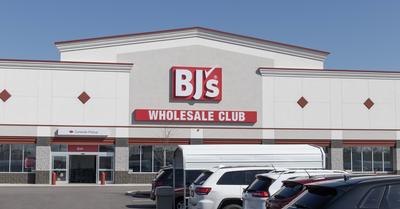Table of Contents
Government Assistance for Internet Access
There are a couple of different programs with the federal government that you should be aware of. There are different qualifications and they work in different ways.
Lifeline
Lifeline is a government program that is regulated by the Federal Communications Commission, or FCC. This program provides a discount for internet or phone service every month as long as you qualify.
Lifeline benefits provide a discount of at least $9.95 per month off of your broadband internet service, your landline or wireless phone service, or bundled services. Enhanced Lifeline is also available forTribal lands and the discount goes up to $34.95 per month. However, for Enhanced Lifeline you will have to be located on federally recognized Tribal lands.
You can qualify for Lifeline if you have an income that totals 135% or less of the federal poverty guidelines. These guidelines are determined b y the state you live in and the size of your household. The average federal poverty guideline is around $34,000 for a family of four.
You can also qualify through a government assistance program as long as one person in the household participates. This would include Supplemental Security Income (SSI), Veterans Pension and Survivors benefits, and Medicaid. It also includes the Supplemental Nutrition Assistance Program (SNAP).
If you meet the necessary qualifications, then you will be able to choose a provider in your area that participates in the Lifeline program. When you sign up, you will have to provide proof that you are eligible for assistance and you will also have to renew the Lifeline service each year. In addition, you can only have a single Lifeline benefit in a household so you will have to choose to use Lifeline for internet, phone, or bundled service subsidy.
There are a lot of independent service providers (ISPs) that participate in the Lifeline program including Verizon, CenturyLink, Frontier, and RCN.
ConnectHomeUSA
ConnectHomeUSA started as a partnership with the Department of Housing and Urban Development and some other organizations in order to close the digital divide for families in HUD-assisted housing. However, this program is not specifically for seniors and only provides for families that have school-age children. If that is you, though, then this program can provide the resources that can help you find affordable internet options.
The program involves over 80 communities around the country and more are getting added all the time. People that live in the ConnectHomeUSA communities have access to resources that may help them find affordable internet service options as well as digital devices.
Emergency Broadband Benefit Program
This program is new and was recently announced by the FCC after the harsh impact of the Covid-19 pandemic. This program is designed to assist low-income households that were financially affected by the pandemic. The Emergency Broadband Benefit Program (EBB) will offer a discount of up to $50 a month to qualifying households (up to $75 a month for households on Tribal lands recognized by the government). Furthermore, it will provide a discount of up to $100 that can assist you when you purchase some internet devices such as laptops or tablets.
Households that qualify for the Lifeline program are eligible for the EBB program as well. You may also qualify if you are registered in another government assistance program. The start date for this program has not yet been established. The program has been put into effect and been authorized by the FCC so it is coming. Check out this page for more information.
Public Wi-Fi
Wi-fi is often available free of charge in public spaces like the library or government buildings. In addition, some private companies offer free Wi-fi for paying customers so you can take advantage of it for an extended period for the price of a meal or even just a coffee. See if there are any parks, malls, bus depots, train stations, or other public places that offer free Wi-fi.
Private Programs
From non-profit organizations to programs offered by independent service providers, there are a lot of different opportunities that you may be able to take advantage of.
EveryoneOn
This organization strives to bring internet and other technology to low-income families and communities in order to create better opportunities. They offer tools that can help you find low-cost internet, computers, and other resources.
PCs for People
PCs for People wants to provide refurbished computers to low-income individuals and non-profit organizations. However, they also include internet access as part of their mission.
Human-I-T
This program was created to reduce e-waste. To do this, they repair and reconnect reusable technology and provide them to the people who need them. They also have free resources that may help you locate low-cost internet.
NetZero
NetZero has now become a normal ISP in most ways, but they still do offer free dial-up internet to people who cannot pay. This service may not be fast enough for videos, games, Zoom, or other things, but it may be enough to surf the web. They usually offer free service from somewhere between 28.8 Kbps to 56 Kbps. They also have restrictions on the free plan for the amount that you can use the internet. This is a good choice for those who just want to check their email every couple of days or do other basic things online.
FreedomPop
FreedomPop offers free internet for mobile phones as well as free home broadband and free wireless service. They do have low data caps and the speeds only go up to 1 Mbps, but there are paid upgrades that may be more affordable than other options that allow you to get more data and faster service up to 25 Mbps.
Altice
Altice runs Optimum and Suddenlink and both have programs designed to assist those with low-income. Their program is called Altice Advantage Internet and it offers internet speeds up to 30 Mbps for only $14.99 a month.
This program is for people who have a child recipient of the NSLP, receive Supplemental Security Income (age 65 and over), or Veterans who currently receive public assistance.
AT&T
AT&T Access provides the internet for qualifying low-income families for the affordable price of $5 to $10 a month. The internet will have a speed of up to 10 Mbps. In order to qualify, the customer will have to have at least one family member who receives SNAP program benefits.
Spectrum
Spectrum has a program called Internet Assist that provides internet of up to 30 Mbps for $14.99 a month for the first 12 month. In addition, there is no contract or data cap on their program. This program is available for those who receive Supplemental Security Income (over the age of 65). They also provide service for those who receive National School Lunch Program benefits or are recipients of Community Eligibility Provision of the NSLP.
Xfinity
Xfinity has a program called Internet Essentials that provides a $9.95 plan for eligible customers. This program is designed with seniors, students, and low-income families in mind and offers internet speeds up to 25 Mbps. They do not require a credit check and also offer free Wi-fi at your residence.
They also offer low-cost computers as a part of their program so you can choose a desktop or a laptop computer for $149 that also includes Microsoft Office, Norton Security Suite, and a 90-day warranty. To qualify, you will have to fill out an application and be approved.
Cox
Cox is part of the Connect2Compete Program which is aimed at helping primary and secondary school students. If you have a student in grades K-12 in your household, then you may be able to qualify for the internet at $9.95 per month. You will have to qualify and participate in another assistance program including SNAP, TANF, or public housing.
Verizon
You can get a Lifeline discount with Verizon, but they also offer their own discounts with Verizon Fios where you can get $20 off in addition to the $9.95 Lifeline discounts. This means you can get high speed internet for a reasonably low price (maybe even as low as $20 per month).
Recent Articles


















